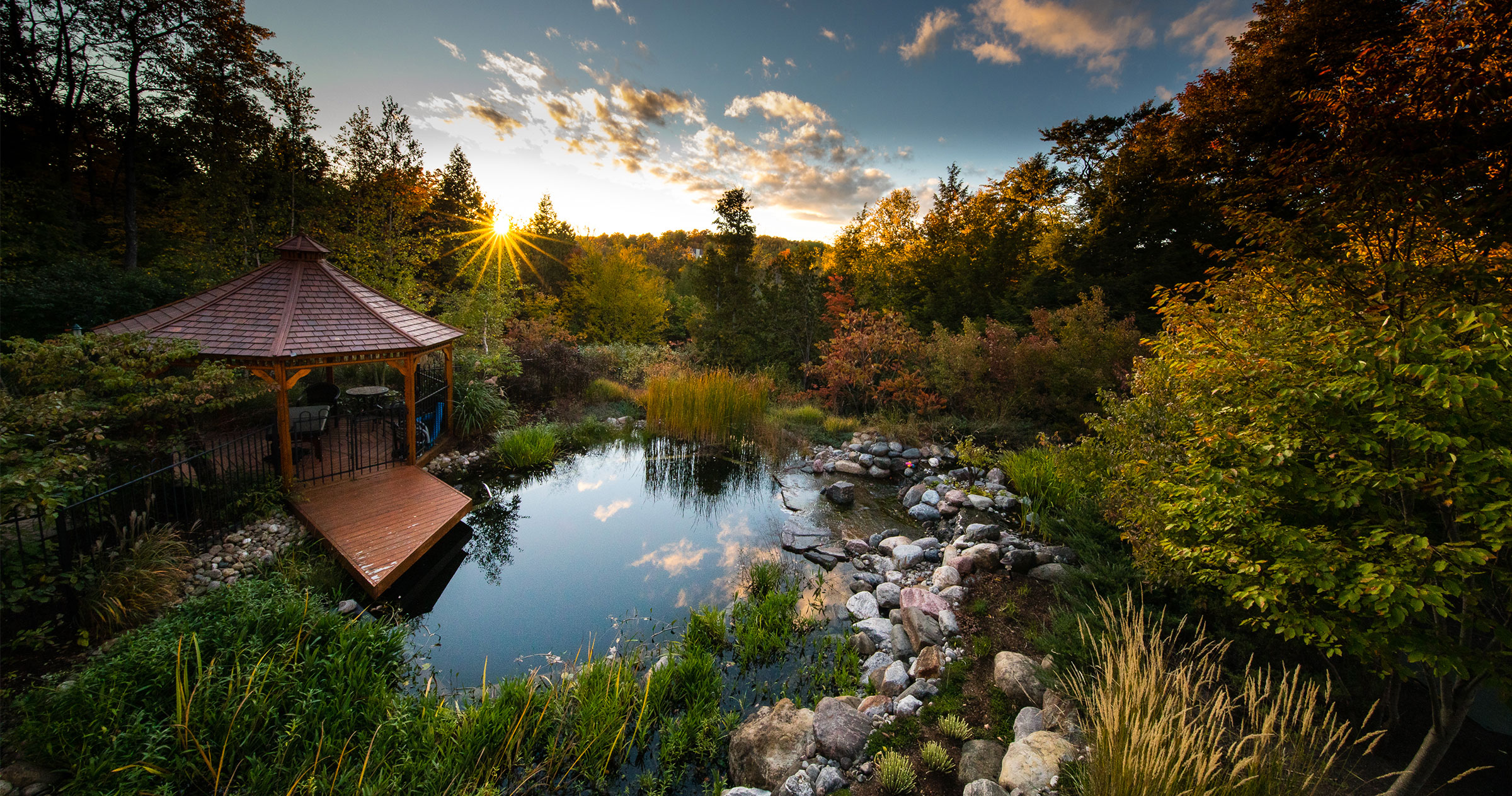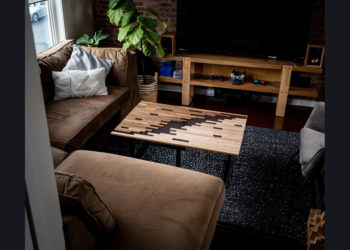From status to self-sufficiency, our outdoor living spaces are experiencing an interesting paradigm shift. Lavish swimming pools and pizza ovens are slowly being snubbed for some unusual suspects. Maybe it’s their predictability. Maybe it’s the general ennui typical of chronic consumerism. Or maybe it’s the preposterous price tags with little to no return on investment. As we blur the lines between the great outdoors and outdoor living, these hallmarks of luxury are being challenged by back-to-basic ideas that feed the mind, body and soul.
Living Pools
Ecological landscaping is challenging traditional formal backyard aesthetics that fight with nature by trying to tame it. Living pools or “natural swimming ponds” are helping to shape this movement. These aquatic living ecosystems are designed to look, feel and function like natural ponds. They mimic the natural environment by creating a chlorine-free-water habitat where wildlife and flora help keep the water clean and clear. The result is a freshwater swimming experience, surrounded by birds, dragonflies, frogs, turtles, newts and a host of other fauna.
“It’s a complete experience – it is not just a pool,” says Jean-Marc Daigle, president and senior landscape architect of Genus Loci Ecological Landscapes Inc. in King City, Ontario. “We put a lot of work and thought into the context, into the surroundings. The aesthetic is very much grounded in nature.”
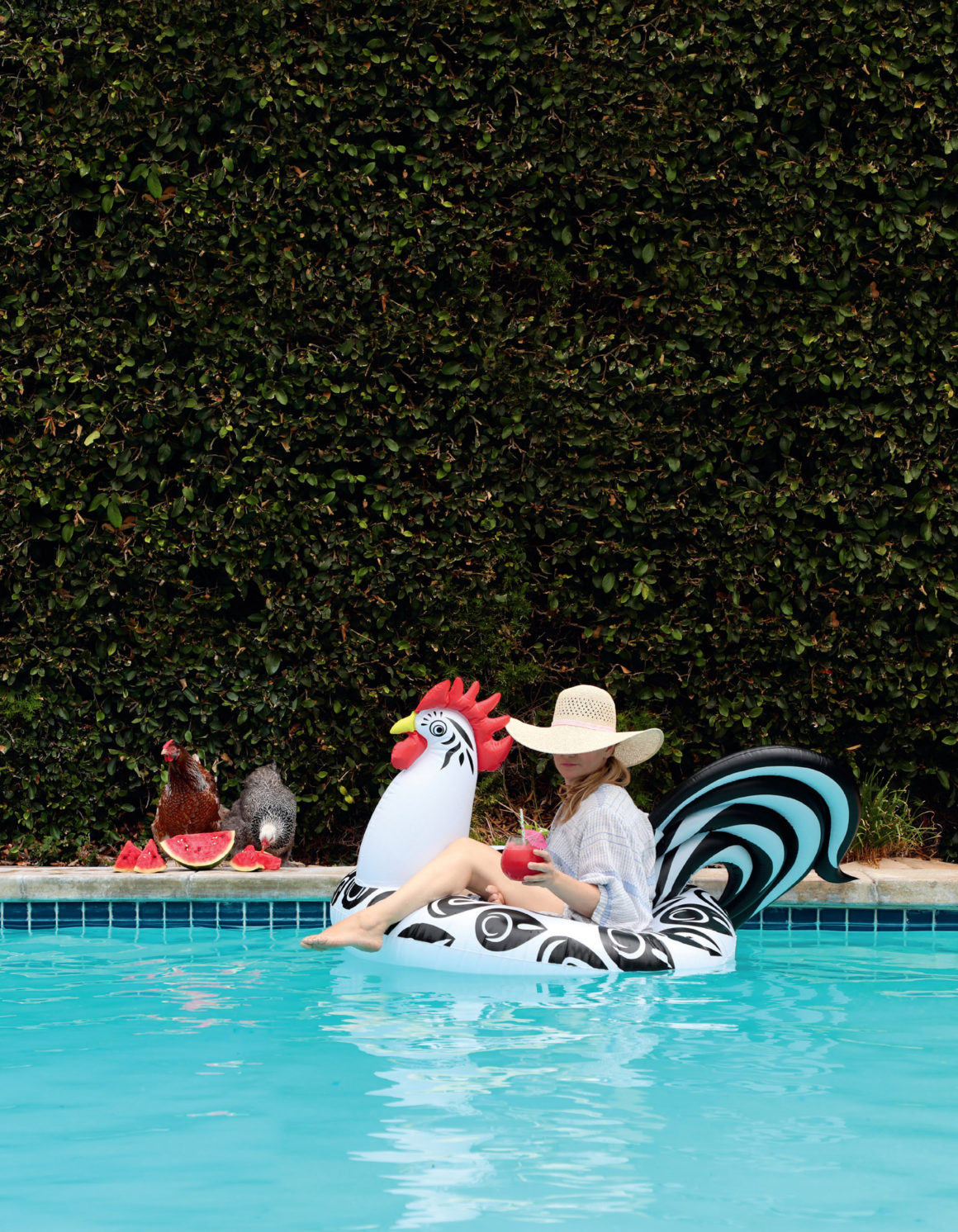
For the past 25 years, Daigle has worked toward landscaping with natural ecosystems versus manicured lawns. “People think a natural aesthetic will look messy, but there is a way of designing naturally that looks structured,” he says. “It’s not a tangled mess. Good design is about looking for patterns in nature and distilling them so that they are palatable to the eye.”
Daigle says urban settings are more suitable to natural dipping holes. These are small basins with steps leading to a little water cove that is about five or six feet deep. In larger backyards, natural swimming pools can be customized to be tucked away on the property and accessible through a nature trail or connected to the home with a dock, deck or stone terrace.
Unlike conventional swimming pools that are covered and unused during the cold months, natural swimming ponds are a landscape feature that can be appreciated all year long. In the fall, they provide beautiful reflective qualities and in the winter, they can be converted to skating rinks. “Think holistically about your yard,” says Daigle. “I’d like to see more yards with less grass. More yards that incorporate pollinator gardens, yards that are subdued and informed by nature. The more I can encourage this, the more I feel I can make an impact, a positive change.”
Edible Gardens
Landscaping has also taken a delicious twist with the emergence of foodscaping, or edible gardening. Pretty with a purpose, foodscaping incorporates beautiful, edible plants, called “ornamedibles,” into an existing garden. By adding “ornamedibles,” gardeners not only grow food, but also minimize bare soil, which prevents the growth of weeds. This means they spend less time maintaining the garden and more time enjoying it.
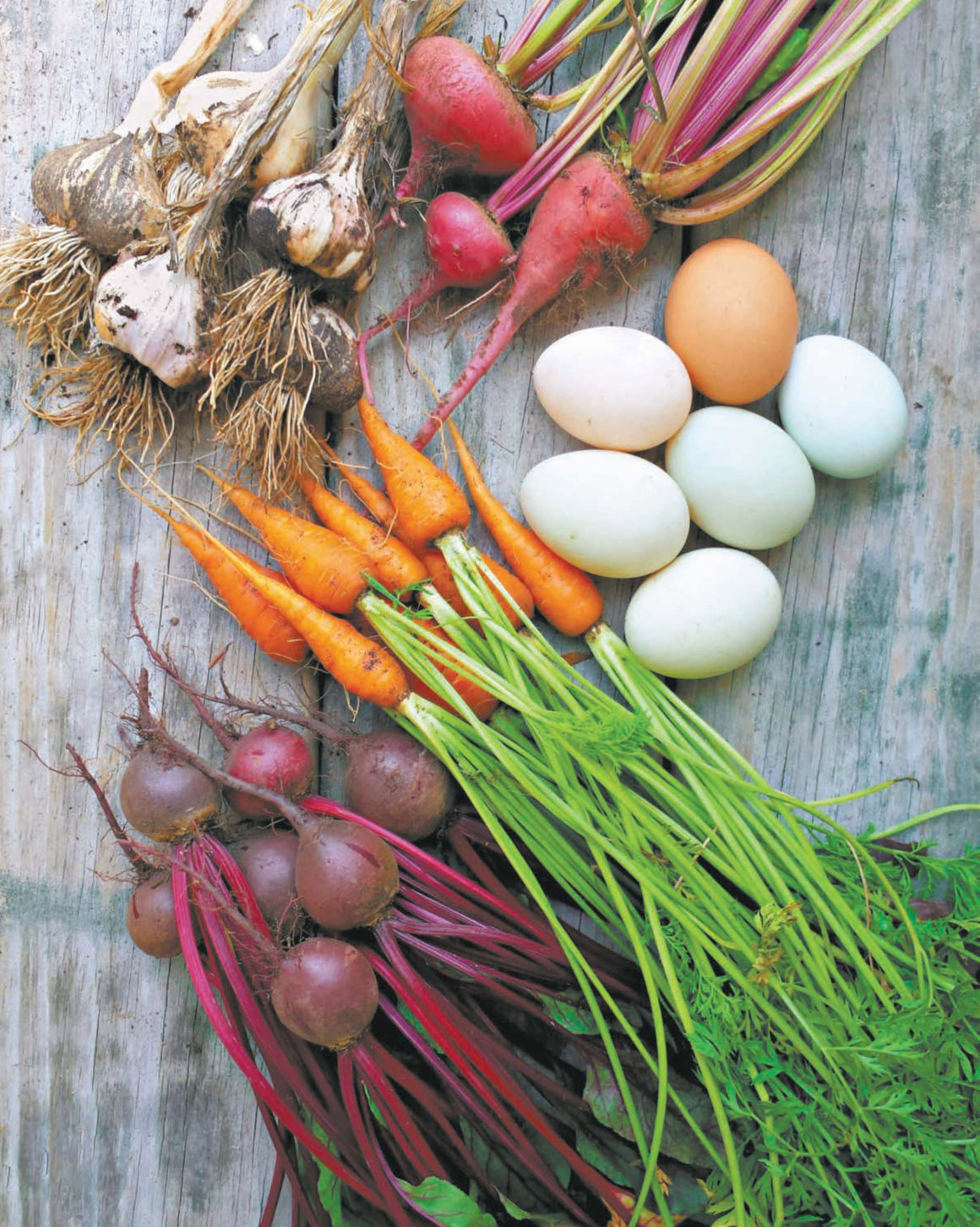
Lifelong gardener, fifth-generation chicken keeper and author Lisa Steele says there is also a plethora of health benefits that can be derived from edible gardening. According to Steele, a simple mix of five herbs is beneficial to respiratory and immune system health: anise hyssop, blue cornflower, echinacea, rosemary and thyme keep mucous membranes healthy, lungs in good working order and immune systems working properly.
“You can still have a pretty yard and grow things that make sense. I think it’s kind of contagious,” says Steele. Coping with a global pandemic and fears of a food shortage have propelled the idea into the mainstream. “We are going to see more backyard-to-table where you are not relying on someone else for a fresh healthy food source,” she says.
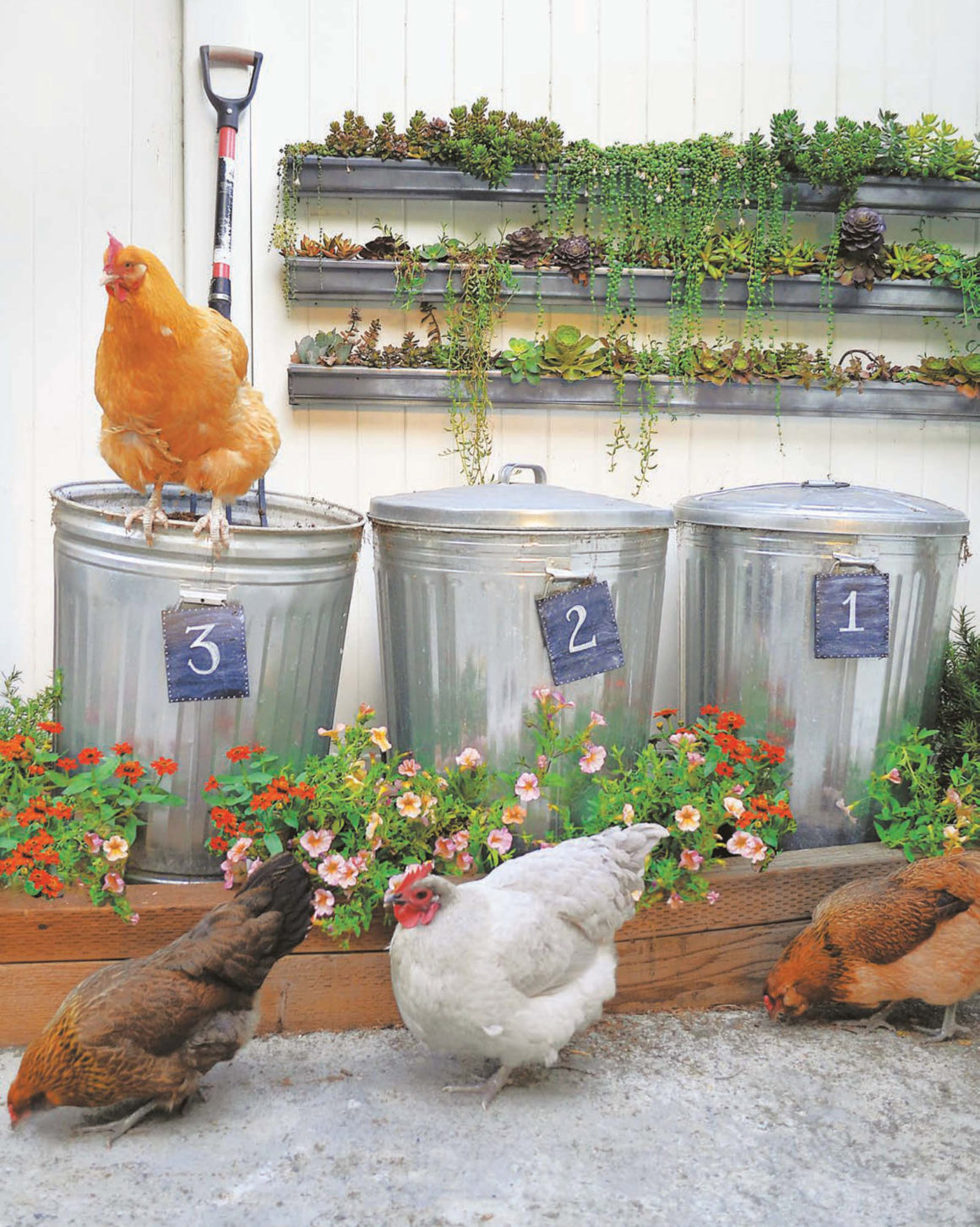
The idea of a sustainable, homegrown food supply doesn’t end with herbs, fruits and vegetables. “Nearly everything you plant for your family is good for chickens as well,” Steele says in her book Gardening with Chickens.
“Backyard chickens are booming,” she says. While the idea of a farm-fresh egg supply has resulted in a heightened interest in hatcheries, chickens have also proven to provide more than their yolky yield. “People are surprised at how pet-like chickens are; they have big personalities. Their social order is fascinating. They have a pecking order, little squabbles, and friends that they pair up with. The interaction between them is fascinating because they are a little society. You wouldn’t really get that from a cat or dog.”
Drinking With Chickens
Along with her three dogs, four cats and African Grey parrot, Kate Richards keeps a small flock of chickens in her edible garden in Los Angeles. “My goal with the garden was to be an urban farmer,” says Richards. “Then I noticed I was growing more things that were used for cocktails than food—I realized I had made a cocktail garden more than a food garden.”
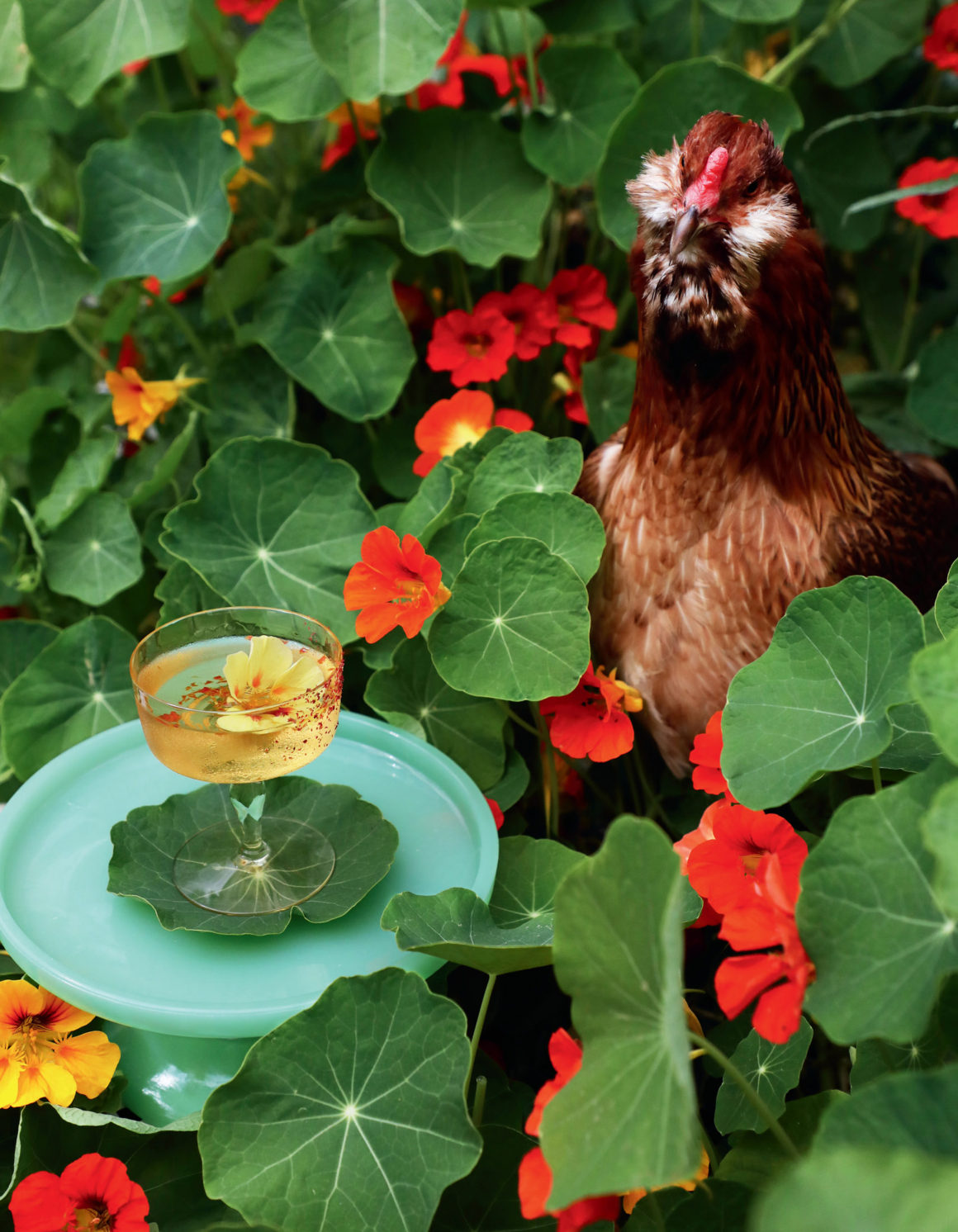
Enjoying her garden-to-glass beverages with her backyard chickens hatched the concept of her new book Drinking with Chickens, a quirky cocktail book with a nod to backyard chicken-keeping.
According to Steele, backyard chickens take about 30 minutes a day of maintenance, and in the words of Richards, in addition to producing fresh free-range eggs, they also facilitate a “homebody happy hour.”
For Richards, “homebody happy hour” is a celebration of the backyard as a sanctuary. It’s a daily happening that combines cocktails mixed with homegrown ingredients, including egg whites, and floral garnishes, with lively entertainment by her feathery friends.
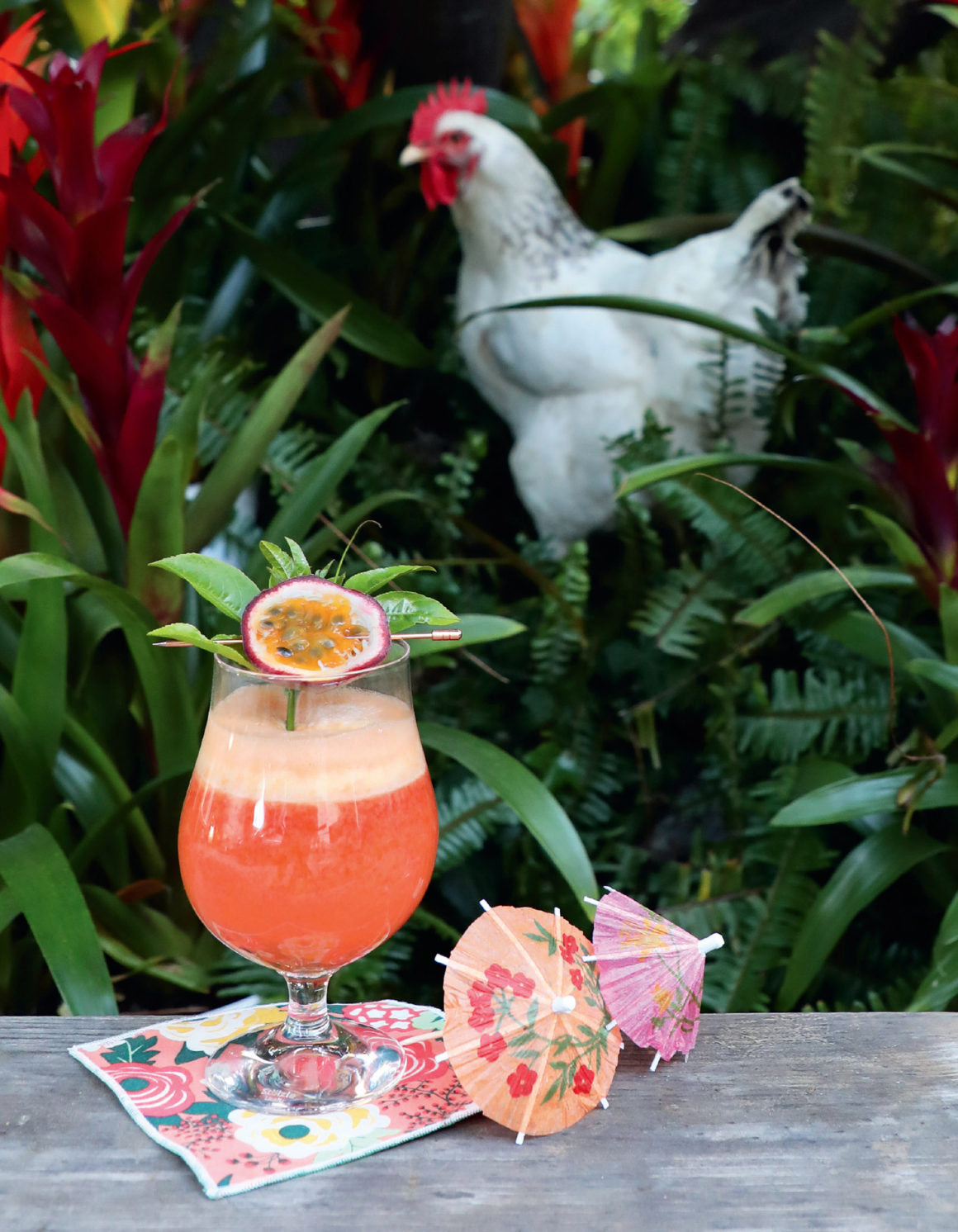
“Drinking with Chickens found an enthusiastic audience almost immediately because, as it turns out, this is something that quite a lot of chicken keepers (and other pet owners) do, and I was just the first to fly my flag about it,” says Richards. “For me it’s about making a fresh, elevated cocktail and celebrating the joy of where you are and being grateful for it. Especially in this current time, the thing that really helps is perspective and appreciating little moments of happiness at home.” •
Columnist Barbara Milner is an interior designer and principal at South Hill Interiors, a design firm that serves the Greater Toronto Area and Kawartha Lakes region. The firm’s real estate arm offers realty services with Forest Hill Real Estate Inc.
Genus Loci Ecological Landscapes Inc.
www.genus-loci.ca
905-726-8498 ~ 877-467-2079
Fresh Eggs Daily
www.fresheggsdaily.com
Kate Richards
Drinking With Chickens
www.drinkingwithchickens.com

